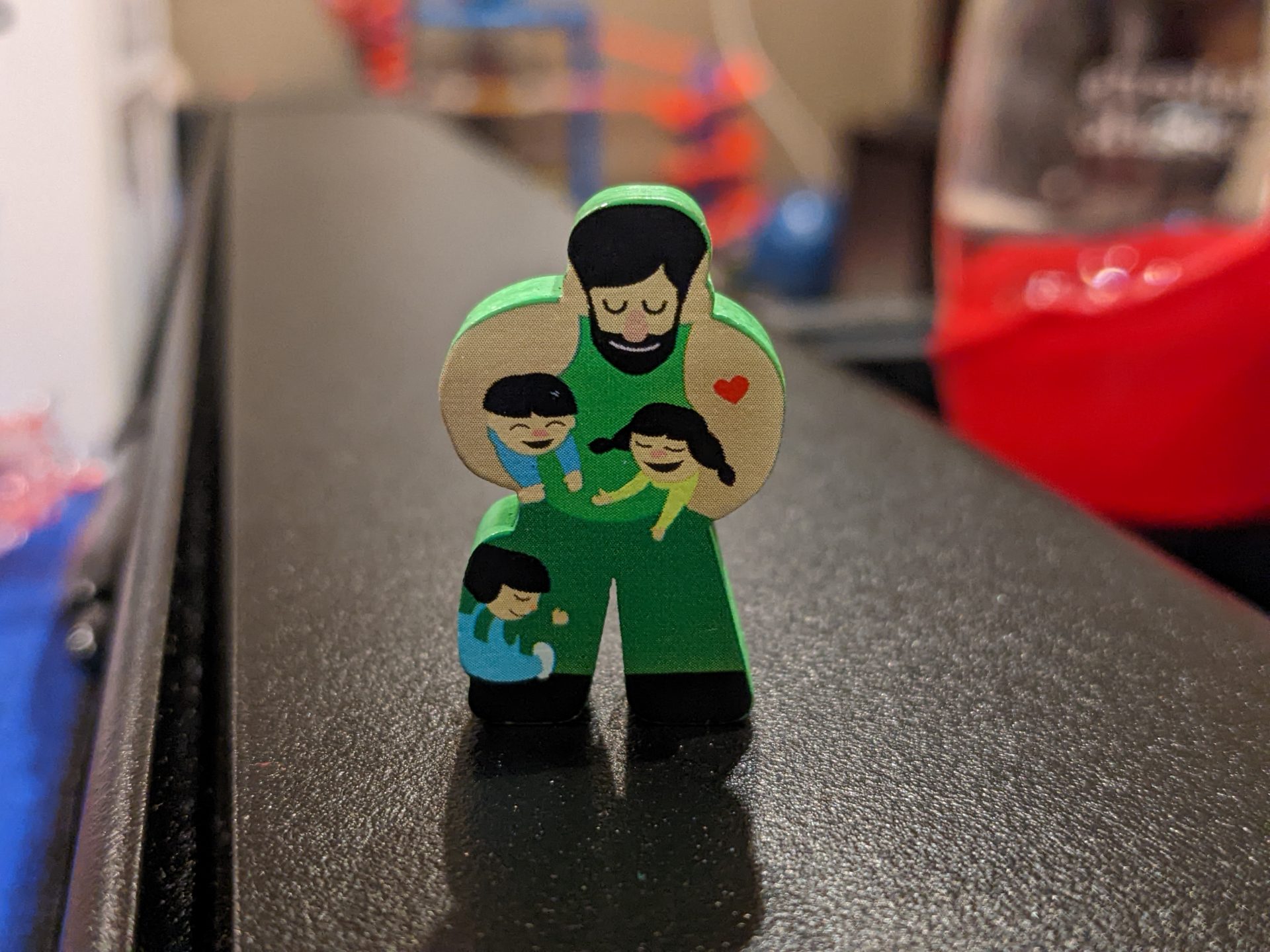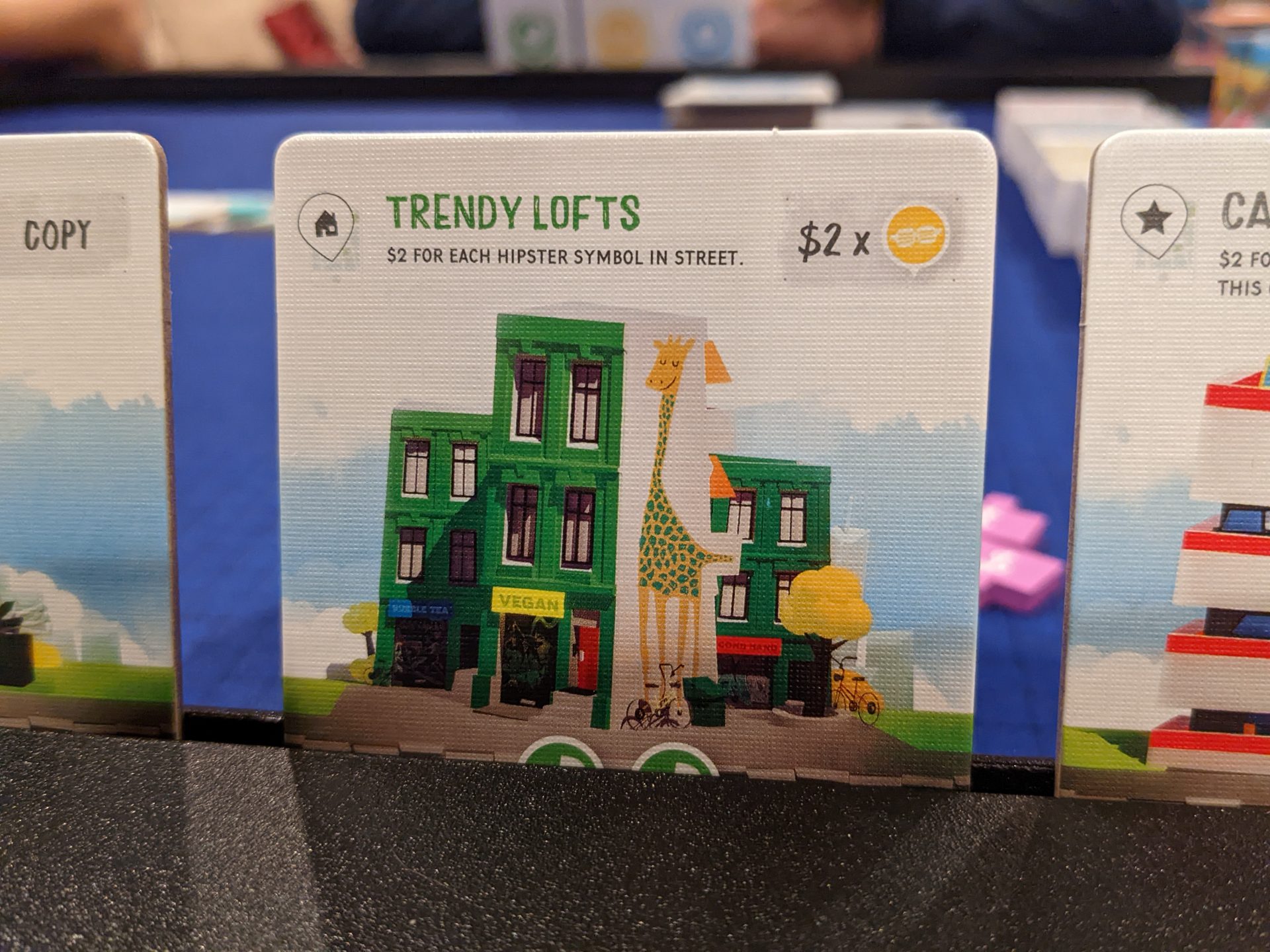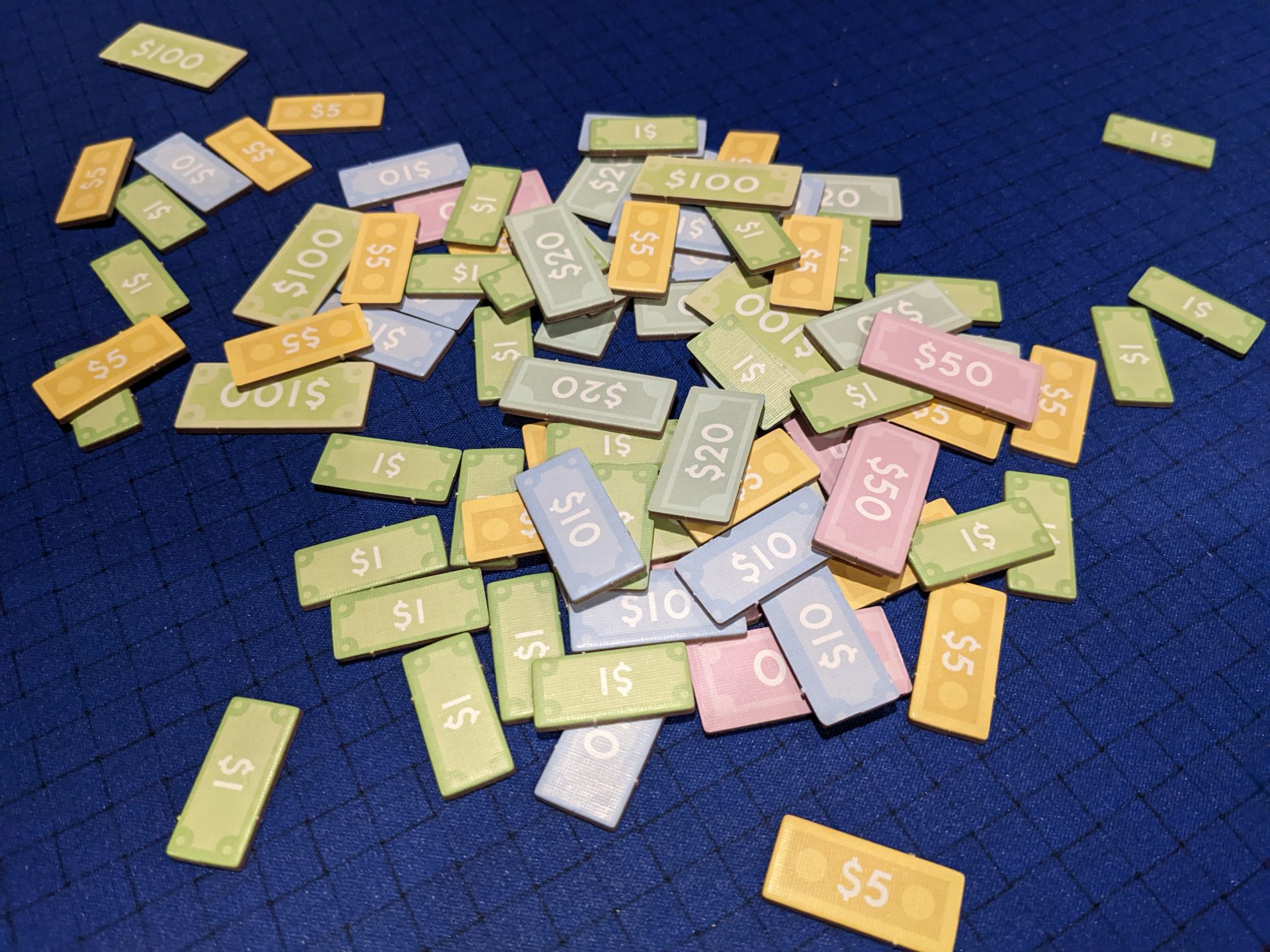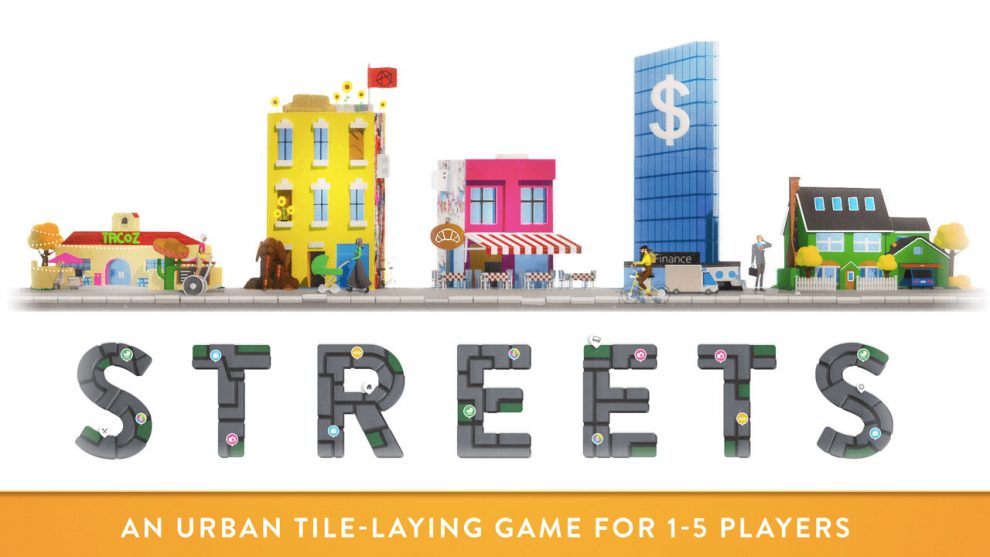Oh, Villagers and I became such close friends over the years!
I really love the first game from designer Haakon Gaarder, Villagers, published by Sinister Fish Games. When Gaarder’s next game, Streets, hit Kickstarter back in 2020, I couldn’t have hit the “Back This Project” button fast enough.
Then I waited. Waited quite a bit more, months even. The game made it to the UK shores first and as a US backer, I had to wait many more weeks. No problem, I thought. I’m getting the next game from that Villagers guy, and the wait will be worth it!
Then, Streets arrived, and while reading the rulebook, dread creeped over me.
Justin! You didn’t read the rulebook BEFORE backing the game?
This is a fair question. I do that sometimes, but other times, I like to roll the dice. To be perfectly honest, this was the Villagers guy! I threw caution to the wind and just blindly backed the game. Didn’t even begin to consider the possibility that this wouldn’t be a home run for my playstyle.
Streets was now in my hot little hands. I opened the box. There weren’t a lot of tiles, and Streets is a tile-laying game. The bits were decent, and some of the Kickstarter-exclusive promo cards looked interesting. I liked the cardboard money chits, even if I knew I would never use them because I’ve got Iron Clays. I had to admit, I loved that Streets came in the same small, rectangular box style as Villagers, so that they could sit side-by-side on my shelves.
Then I played the game a few times. Streets isn’t the game I thought it would be, but I will carve out a place for it to live on my shelves…for now.

Fluffy Pillows
My first solo play was an indicator that Streets was going to land more softly than I had hoped.
In Streets, players lay tiles to build a city together. Starting with 3 tiles in hand, turns are simple. Play a tile in line with, or perpendicular to, another previously-placed tile. Streets have to match up, as long as you don’t make a street “double wide”; that is, buildings in the game are not allowed to face each other. (Streets seems to pull arbitrary rules like this out of thin air; another one limits the size of any street to 5 tiles. Why 5? Why not 3? Why is there any limit?)
After anyone places a tile, that player places an ownership sign on the tile and they also drop meeples from the supply onto the tile matching the symbols at the bottom of each tile. That means hipsters (yellow), tourists (pink), parents (green) and/or shoppers (blue) will arrive at the building represented on your tile to offer business to that establishment. Then, everyone looks to see if a street has been enclosed by perpendicular tiles at both ends; if so, it scores immediately.
Drawing a tile to refill hands back to 3 tiles ends the turn before moving to the next player. Play continues until all tiles are placed into the city, and the player with the most cash wins.
Everything about gameplay is simple, but there are some twists to finding ways to maximize scoring tiles at the proper moments. However, it is the scoring in Streets that breaks the experience.

“Oh man, we have to score another street?”
Cash isn’t a problem. Moving people around? Yep, that’s a problem.
When a street is scored, the players collectively ensure that all buildings on a street get the cash they deserve. One by one, you’ll have to examine the scoring condition of each tile, then make sure that you count up all the matching meeples or symbols that add to that tile’s score. On many streets, you’ll have to do this with 4 or 5 tiles.
Then, the meeples on those tiles have to move to another tile on a different, non-enclosed street matching their color. The person who triggered that street’s scoring picks where those meeples go. If meeples have nowhere to go, all of those meeples are stood up, and they have “FOMO” until they can move to a newly-placed tile that matches their color.
FOMO (yes, “fear of missing out”) gives successive players a juicy opportunity: place a tile that matches the color of those FOMO folks, and those meeples immediately move to your tile. Even if the tile’s scoring condition doesn’t take advantage of these new guests, you’ll get $1 for each meeple on any of your tiles when the street scores.
Scoring streets, then, is the heart of gameplay in Streets. It’s also the reason the game grinds to a halt so dramatically, in a game that is so breezy. My first 4-player game of Streets took 45 minutes; about 20 of those minutes were spent scoring tiles.
In the grand scheme of things, this isn’t terrible but it does interrupt the fun a little too often. In many of my other tabletop games that are broken up into “ages” or phases, you’ll have a couple of rounds of something like this: scoring, some administrative clean-up tasks, then you’ll keep playing the core elements of that game.
In Streets, the balance is a bit wacky: you’ll be doing admin/clean-up phases for longer than the act of placing tiles and building the city!
Streets takes a tactical view to the action, limiting your choices to 3 tiles each turn, and reacting to the ever-changing dynamics of the city. Then, you’ll wait. Waiting is worse when you have to sit through scoring a street where you don’t have any ownership signs. It’s doubly worse when you play with 5 players.

Expansions: All Good, Until You Score!
Streets includes 2 mini expansions which add a bit more complexity to the proceedings. This is a great benefit that many games are beginning to offer to ensure that even light games such as Streets include a little more junk in the trunk. This seemed like the perfect way for me to get the game closer to the weight I was hoping for when I backed the project, at least until we had to score streets.
The Business Expansion adds set collection tokens. Each time a street scores, players can choose one of their buildings on a street that just scored to also take a token matching the building tile’s category (restaurants, retail, residential, leisure). At the end of the game, the leader in each of these categories will get an extra cash bonus, as well as a $10 kicker for every full set of the 4 symbols.
The Consultants Expansion grants each player a special power for that game. Some powers are straightforward, some only fit with larger player counts, but all the powers are useful. All you have to do is remember your special power all game long, and so far, I haven’t played a game where all players were able to remember to do that!
It’s great that the expansions were included. For some players, particularly those looking for a midweight experience, adding both expansions for all plays is the right move. But the expansions only slow the street scoring down even more.

Tough Break
Streets is fine. I wanted the world, and that’s on me—my main lesson here is to read a rulebook before I rush into a purchase, even one from a designer who could apparently do no wrong in my eyes. That said, while the gameplay doesn’t shine, the artwork is excellent (here, like with Villagers, Gaarder did all the artwork for Streets). The tiles are beautiful and the iconography is mostly excellent, save for a couple of edge case scoring conditions used for some tiles.
The base game is enough for me. Streets is a filler, and it’s a handsome product on the table. The expansions don’t add enough interesting elements for now, but I could see using the Consultants expansion more as I tire of the base game. The Business expansion just doesn’t add anything interesting to the decision making in the game.
Streets accommodates 1-5 players. I played the solo variant twice, but I wouldn’t play the solo beyond using it as a learning tool. I was surprised to find that I would rather “dummy hand” a second player than to pretend the solo AI would do anything different than what I would choose to do with its actions.
Three players seems best. You’ll go through 12 tiles each, and over the course of full games you will be able to try a lot of different things. At 4, and definitely at 5 players, you’ll be surprised how often a street will start and end before you get to take your next turn. At 5 players, you’ll only end up placing 9 tiles for the game, but because each player will need to analyze the current game state, Streets overstays its welcome.
I backed Streets, and for the money I paid, I don’t want to move it out of my collection just yet. But I will move it out soon, because I have other fillers that feature more interesting decisions in a shorter playtime.
The best lesson? I’ll read the rulebook for Gaarder’s next game BEFORE jumping on the bandwagon.












Have you got a chance to review MOON yet? Thank you.